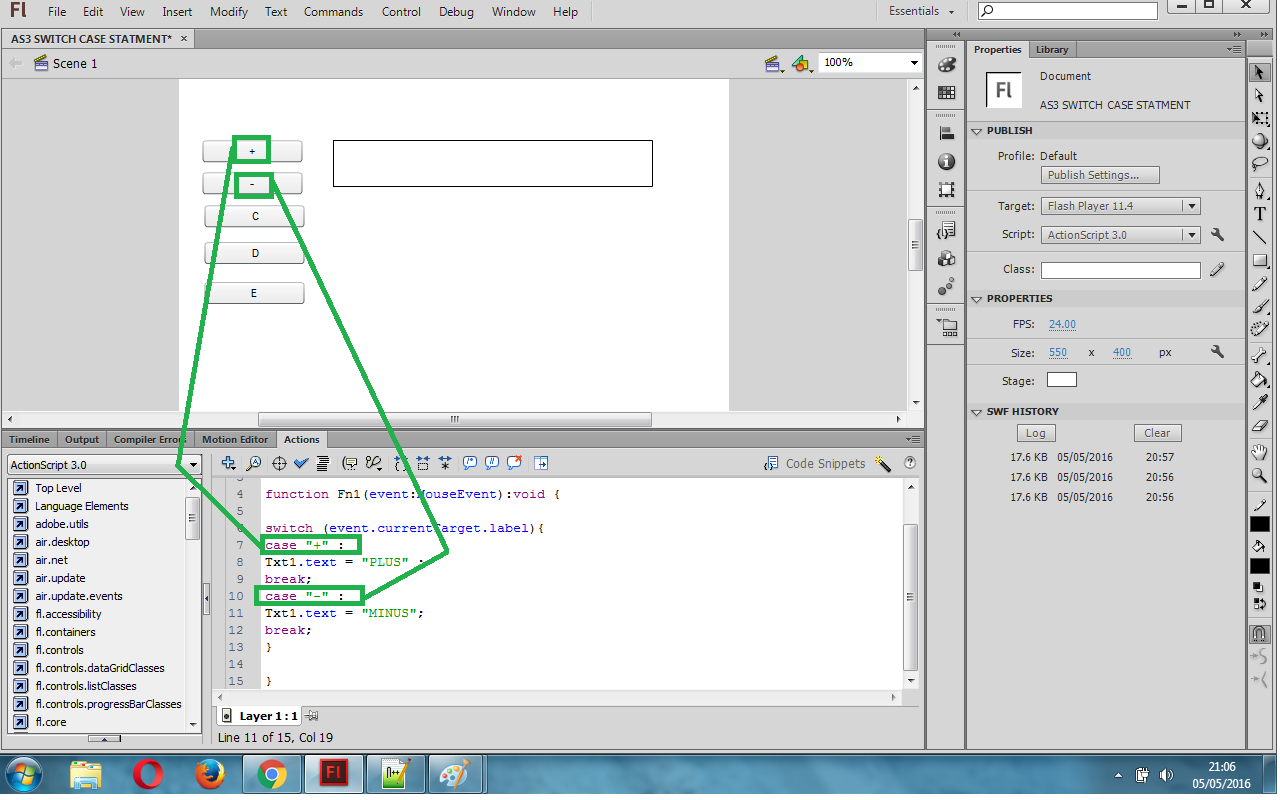

The TextFormat allows you to customize font size, color, alignment, and more. Pass an instance of TextFormat to the text renderer's textFormat property: textRenderer.textFormat = new TextFormat( "Source Sans Pro", 16, 0xcccccc )
#As3 textfield colorpicker component code#
That's why the styleProvider property is set to null in the code above.Īdvanced font styles may be customized using the native class. You may need to remove the text renderer's style provider in the factory before changing font styles to avoid conflicts with the default styles set by a theme. set advanced font styles here return textRenderer Var textRenderer:TextFieldTextRenderer = new TextFieldTextRenderer() In the following example, we'll use the labelFactory of a Button component: var button:Button = new Button() īutton.labelFactory = function ():ITextRenderer To render text with the classic Flash TextField, create a TextFieldTextRenderer in the appropriate factory exposed by the parent component.
#As3 textfield colorpicker component how to#
The next section demostrates how to set advanced font styles that may not be exposed through this class.

However, object does not always expose every unique font styling feature that a text renderer supports. button.fontStyles = new TextFormat( "Helvetica", 20, 0xcc0000 ) For example, to customize the font styles on a Button component, you'd set the button's fontStyles property. In general, you should customize font styles on the parent component of a text renderer using a object. This may be used to render richer text with multiple font styles. TextFieldTextRenderer supports a limited subset of HTML courtesy of.

TextField offers limited support for some languages, including right-to-left languages and bi-directional text, and Flash Text Engine is recommended for these languages. Often, this delay will not be an issue, but it can be seen if watching closely. As a workaround, TextFieldTextRenderer can wait one frame before drawing to BitmapData and uploading as a texture when the text or font styles are changed. TextField may render incorrectly when drawn to BitmapData immediately after its properties have been changed. However, this performance difference is generally negligible.į has some known issues and limitations: This results in more state changes and draw calls, which can create more work for the GPU, and it might hurt performance if you have many different instances of TextFieldTextRenderer on screen at the same time.į can sometimes render a bit faster than Flash Text Engine. For text that changes often, the texture upload time may become a bottleneck.īecause each passage of vector text needs to be drawn to BitmapData, each separate renderer requires its own separate texture on the GPU. However, once this texture is on the GPU, performance will be very smooth as long as the text doesn't change again. Similarly, since embedded vector fonts often require less memory than embedded bitmap fonts, you may still be able to use embedded vector fonts when bitmap fonts would require too much memory.Ĭhanging vector-based text on the GPU is slower than with bitmap fonts because the text needs to be redrawn to BitmapData and then it needs to be uploaded to a texture on the GPU. For some languages with many glyphs and ligatures, device fonts may be the only option when embedded fonts would require too much memory. The classic Flash TextField may render text using device fonts, which are the fonts installed on the user's operating system. See Introduction to Feathers text renderers for complete details about all of the text rendering options supported by Feathers. Since no method of rendering text on the GPU is considered definitively better than the others, Feathers allows you to choose the best text renderer for your project's requirements. TextFieldTextRenderer is one of many different text renderers supported by Feathers. The TextField is drawn to BitmapData and converted to a Starling Texture to display as a snapshot within the Starling display list. Text may be rendered with either device fonts (the fonts installed on a user's operating system) or embedded fonts (in TTF or OTF formats). (0,0, rectWidth, rectHeight, cornerRadius) ĬolorPicker.addEventListener(ColorPickerEvent.The TextFieldTextRenderer class renders text using the classic a software-based vector font renderer. Var colorPicker:ColorPicker = new ColorPicker() Learn how to allow users to change colors on elements you want, and also learn how to access the value of their choice if using it in a form application. In this Flash ActionScript 3.0 tutorial we show how to dynamically program the ColorPicker component.


 0 kommentar(er)
0 kommentar(er)
